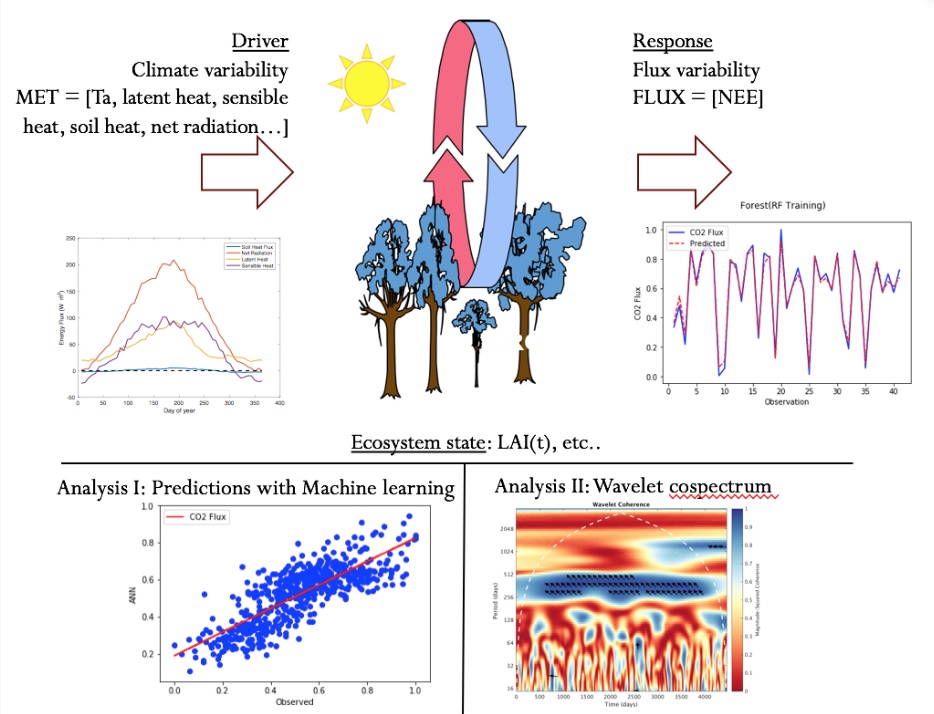Project Lead: Qiaoyun Peng, Department of Atmospheric Sciences
eScience Liaisons: Amanda Tan and Rob Fatland
Carbon and energy exchanges between the terrestrial biosphere and the atmosphere are important drivers of the Earth’s climate system. The net carbon exchange results from a balance between ecosystem uptake (photosynthesis) and losses (respiration), which could be measured and quantified by eddy covariance flux method. Monitoring, mapping and modeling of carbon fluxes in different terrestrial ecosystems are essential for understanding the contribution of these ecosystems to the regional carbon budget. This information will be particularly useful for decision making regarding various carbon-related climate change mitigation strategies.
Although CO2 inventory databases offer the potential for estimating the regional ecosystem carbon budgets in some locations, ecological models have proven to be essential tools for expanding the coverage of these data as compared to the dispersed point site measurements. Therefore, modeling of CO2 flux from other micrometeorological variables is vital for large scale assimilation. But the non-linearity of the relationship between CO2 flux and other micrometeorological flux parameters (such as energy fluxes) limits the applicability of process-based carbon flux models to accurately estimate the flux dynamics. The application of data-driven models by machine learning (ML) methods (e.g., artificial neural networks, support vector machines, regression and model trees) provides an empirical model based on the patterns contained in data, and is able to identify the complex non-linear relationship and estimate land surface–atmosphere fluxes from site level to regional or even global scales. This enables us to diagnose the state of the biosphere from observational data streams, which provide valuable insights for local climate variations.

